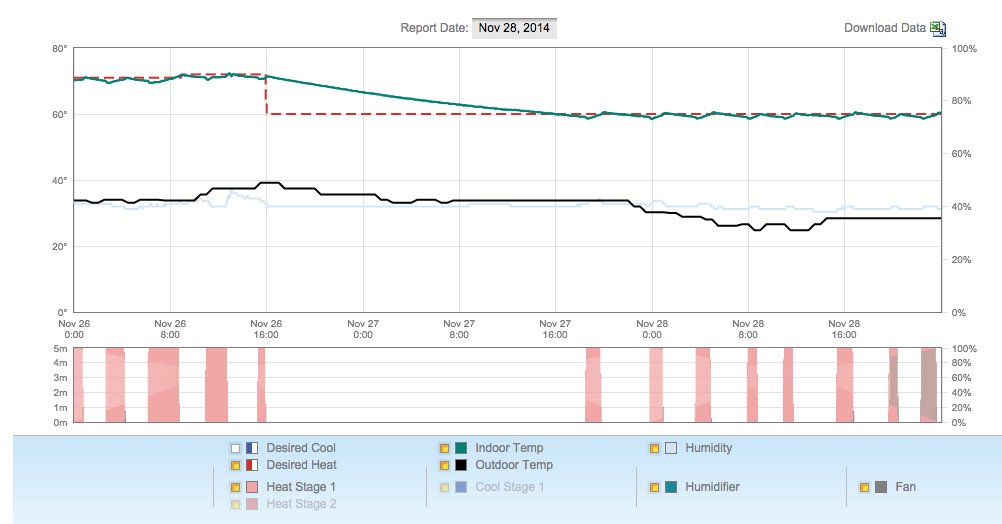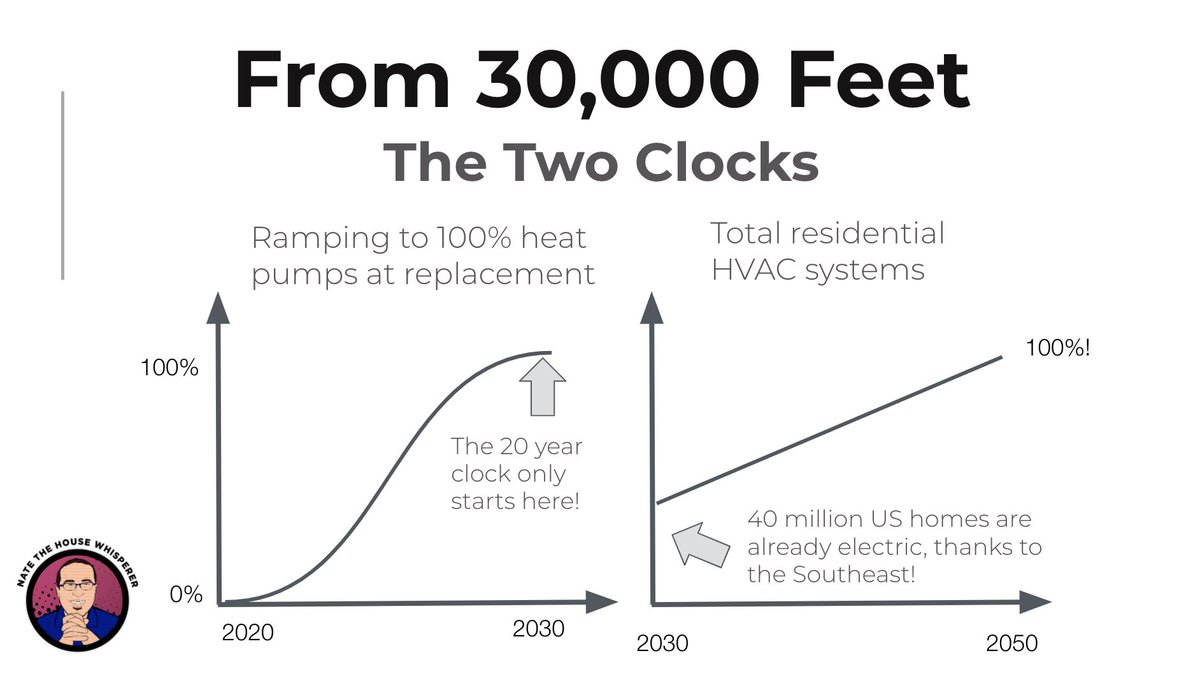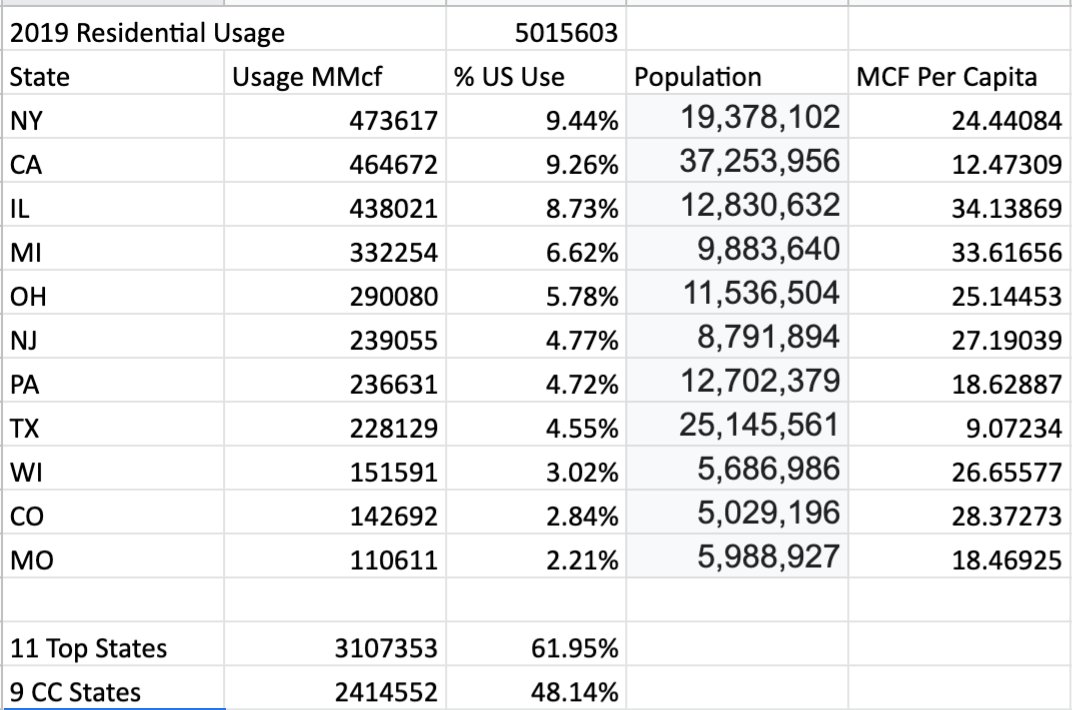
THREAD:
Homes as thermal batteries aka resilience.
This house dropped 20 degrees in 8 hours in similar 30-40F temps during the Hurricane Sandy outage in 2012. It took 2 days to recover.
Post project it took 26 hours to drop 10 degrees.
@lloydalter
Homes as thermal batteries aka resilience.
This house dropped 20 degrees in 8 hours in similar 30-40F temps during the Hurricane Sandy outage in 2012. It took 2 days to recover.
Post project it took 26 hours to drop 10 degrees.
@lloydalter

This is a ~2000 sf 1950s Cape Cod in Cleveland Heights.
Full case study on the insulation and air sealing project we did here. It was about $20K and was focused in the attics of this house (it has 4, or was it 5?)
bit.ly/1959CapeCaseSt…
Full case study on the insulation and air sealing project we did here. It was about $20K and was focused in the attics of this house (it has 4, or was it 5?)
bit.ly/1959CapeCaseSt…
The house started off really leaky at 5800 cfm50 blower door. We got it down to 3100 cfm50. Still not great, but far better. And good enough it turned out.
The house fundamentally changed. The second floor wasn't 10 degrees warmer in summer anymore, it was within 2-3 degrees.

The house fundamentally changed. The second floor wasn't 10 degrees warmer in summer anymore, it was within 2-3 degrees.


The house has a 2 stage 60kbtu furnace. Low stage is ~38kbtu output, close to a 3 ton heat pump.
Manual J was 57K. Reality at 5F is in the 27-30K range.
Here's the house in the 2/15 cold snap, the coldest February in Cleveland history iirc.
Manual J was 57K. Reality at 5F is in the 27-30K range.
Here's the house in the 2/15 cold snap, the coldest February in Cleveland history iirc.

Here's the house that summer on two design days (88F). It has a 3 ton AC that is now WILDLY oversized.
A variable speed 2 ton would be appropriate, and could be set to sip energy at 25-40% capacity at peak times while keeping the house cool because the AC is still running.
A variable speed 2 ton would be appropriate, and could be set to sip energy at 25-40% capacity at peak times while keeping the house cool because the AC is still running.

This house is now a thermal battery.
It can get through a power outage without a lot of drama.
Would it be hard in a multiple day outage at 0-10F temps like Texas just saw? Yes. But post project this house would have a much lower chance of pipes freezing that pre project.
It can get through a power outage without a lot of drama.
Would it be hard in a multiple day outage at 0-10F temps like Texas just saw? Yes. But post project this house would have a much lower chance of pipes freezing that pre project.
But there's a problem.
Few will see the value in spending $20K (or about $150/mo for 15 years) on a project like this, and looking back it should have been at least $5K more for good margins.
Few will see the value in spending $20K (or about $150/mo for 15 years) on a project like this, and looking back it should have been at least $5K more for good margins.
This client sold this house and got $0 extra.
His realtor said "oh honey, people don't care about that, they just care about how many bedrooms and bathrooms there are."
This is why we talk about resale value so much. This client pushed his retirement date back 1-3 years.
His realtor said "oh honey, people don't care about that, they just care about how many bedrooms and bathrooms there are."
This is why we talk about resale value so much. This client pushed his retirement date back 1-3 years.
We're finding about 50% of houses can benefit from air sealing and insulation upgrades like this house got, but we just don't see a path to more than 3% actually upgrading.
There are 3 requirements to do these projects:
1) client must have problems worth spending $100-200/mo to fix
2) client must be able to get that money (without harming themselves financially!!!!)
3) client must plan to live in the house for long enough to enjoy benefits
~3%
1) client must have problems worth spending $100-200/mo to fix
2) client must be able to get that money (without harming themselves financially!!!!)
3) client must plan to live in the house for long enough to enjoy benefits
~3%
Do you want to see more projects like this?
We need a contractor base for it. Which doesn't exist.
And a sales process. And sold projects.
Selling these projects is really f*cking hard. The path is crazy narrow. Executing well is hard too.
Only THEN does financing matter.
We need a contractor base for it. Which doesn't exist.
And a sales process. And sold projects.
Selling these projects is really f*cking hard. The path is crazy narrow. Executing well is hard too.
Only THEN does financing matter.

Only a few homes are going to do this. A lot of comfort issues can be solved with right sized variable speed HVAC, and we can always do hybrids (heat pump + furnace) for unimproved homes that aren't thermal batteries. Most will do that.
Hybrids reduce gas use 40-100% btw.
Hybrids reduce gas use 40-100% btw.
Here's the simplified HVAC 2.0 process. The project above went through the Comprehensive Planning Process and then a major upgrade. Note the % of each path, this is what we're seeing so far. 

If we want resilient homes that are thermal batteries and can ride out crazy outages, we need to do upgrades like this.
But there aren't contractors to sell or do them. Then homeowners need to buy them.
And they have to be done pretty well or they don't work.
But there aren't contractors to sell or do them. Then homeowners need to buy them.
And they have to be done pretty well or they don't work.
How do things get done well? Usually with competition - do a good job or look like an idiot.
That also leads to a race to the top on quality rather than a race to the bottom on price.
All of this is built into HVAC 2.0.
That also leads to a race to the top on quality rather than a race to the bottom on price.
All of this is built into HVAC 2.0.
But the network is small still.
Want to help build it? Take the Electrify Everything Course to learn the details you need to know, thousands of hours of experience pared down into 4-5 hours of content, plus how to find a contractor.
bit.ly/EECtwitter
<fin>
Want to help build it? Take the Electrify Everything Course to learn the details you need to know, thousands of hours of experience pared down into 4-5 hours of content, plus how to find a contractor.
bit.ly/EECtwitter
<fin>
• • •
Missing some Tweet in this thread? You can try to
force a refresh














